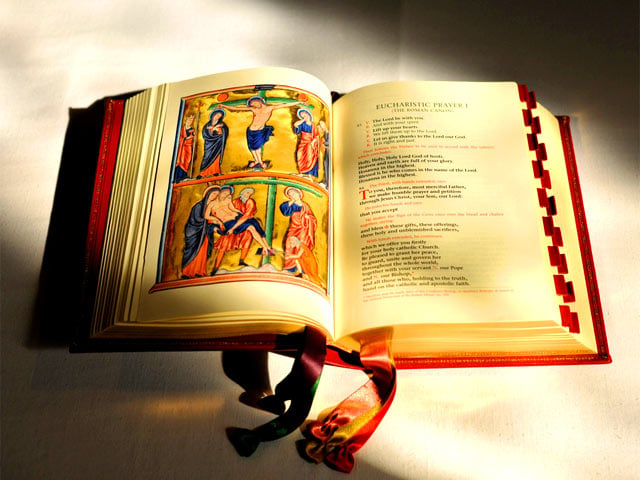- Accueil
- Notre communauté
- Notre foi
- Nos ministères
-
Vie paroissiale
- Calendrier des événements
- St. Aidan's Video Links
- Blog paroissial
- Archives des nouvelles
- Mass Etiquette and Information
- Ad Orientem News and Facts
- Catholic Links
- Prayers and Announcements
- Luis Dizon Reflections - Archive
- Bulletin
- Nous contacter
- Recherche

The Son of Man (Feast of Christ of King)
Click here for this Sunday’s Readings
The book of Daniel contains a number of visions pertaining to the Messiah and the Kingdom of God. The first is in chapter 2, where Daniel interprets King Nebuchadnezzar’s vision and speaks of four kingdoms that are superseded by God’s kingdom, which overtakes all other kingdoms and fills the earth. Later on in chapter 3, when Shadrach, Meshach, and Abednego are tossed into the fire, and a divine figure is seen appearing alongside them and protecting them from the fire.
Now, we have this passage, Daniel has a vision of a figure called “the Son of Man,” who is said to come in the clouds of heaven. This is typical imagery for deity in the Ancient Near East. The Lord, for example, is depicted as riding in the clouds in Psalm 104:3 and Isaiah 19:1. By applying this imagery to the Son of Man, Daniel’s vision indicates to us that a divine entity is in view.
This Son of Man is then given dominion over all the kingdoms of the earth, and all the world shall serve Him. This global rulership is further evidence of His divinity, since no ordinary human is worthy of the honours and authority that are accorded to this figure. These visions of a heavenly Messiah inform the hopes of the Jewish people, who endure foreign domination and earthy oppression with the hope that the coming of the Messiah would one day free them from all this suffering.
Given the exalted status of the Son of Man in Daniel, it is no wonder, then, that when Jesus invokes this imagery and applies them to Himself in the trial of the Sanhedrin, He is accused of blasphemy and sentenced to death (Mark 14:61-64). Yet, despite this sentencing, Jesus is vindicated at His Resurrection, and at His Ascension receives the throne that is promised to Him (Matthew 28:18, Hebrews 1:4-9).
This Feast of Christ the King, we recognize and celebrate Christ’s Kingship, and await the glorious future when He comes again and makes all things new.
J. Luis Dizon
